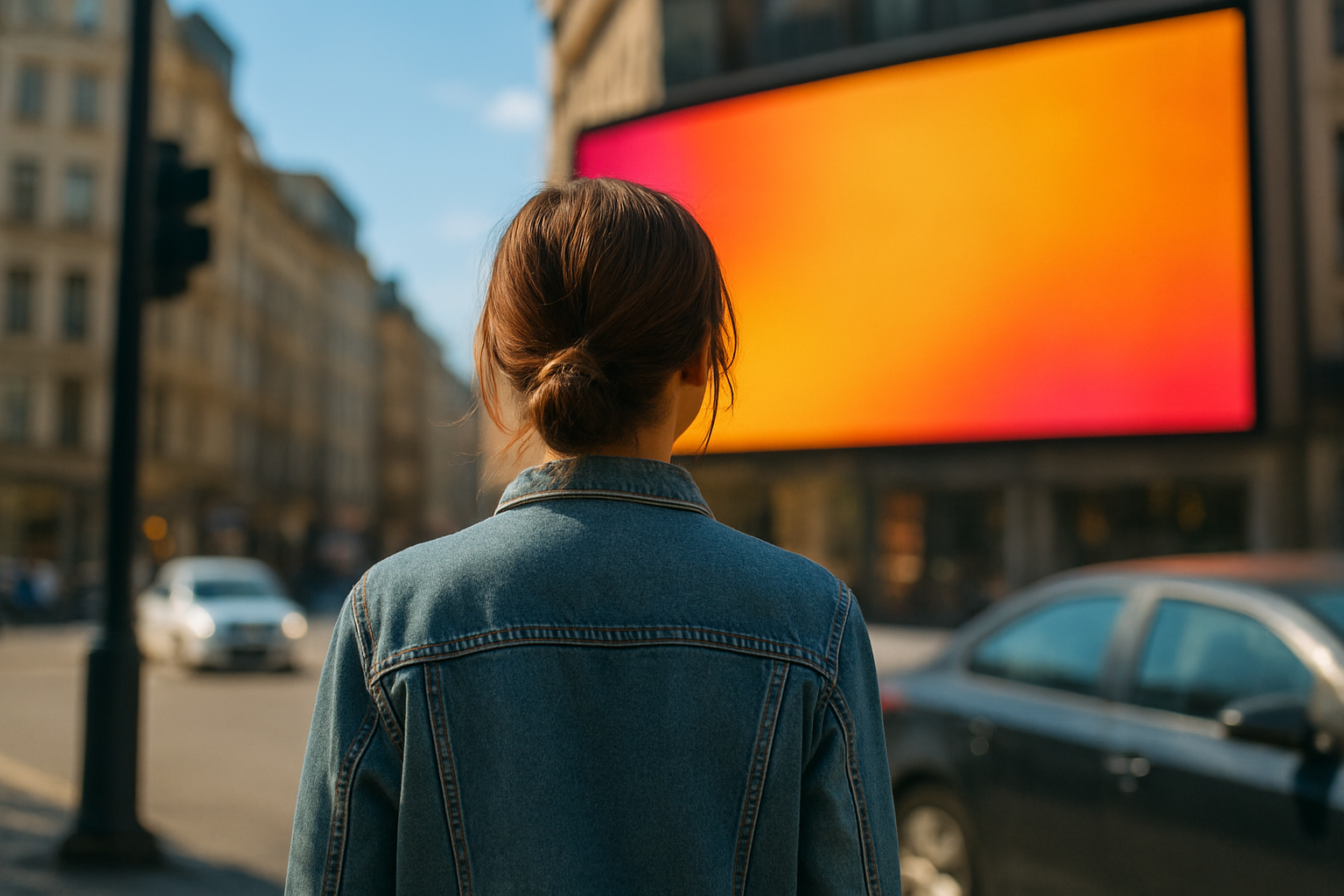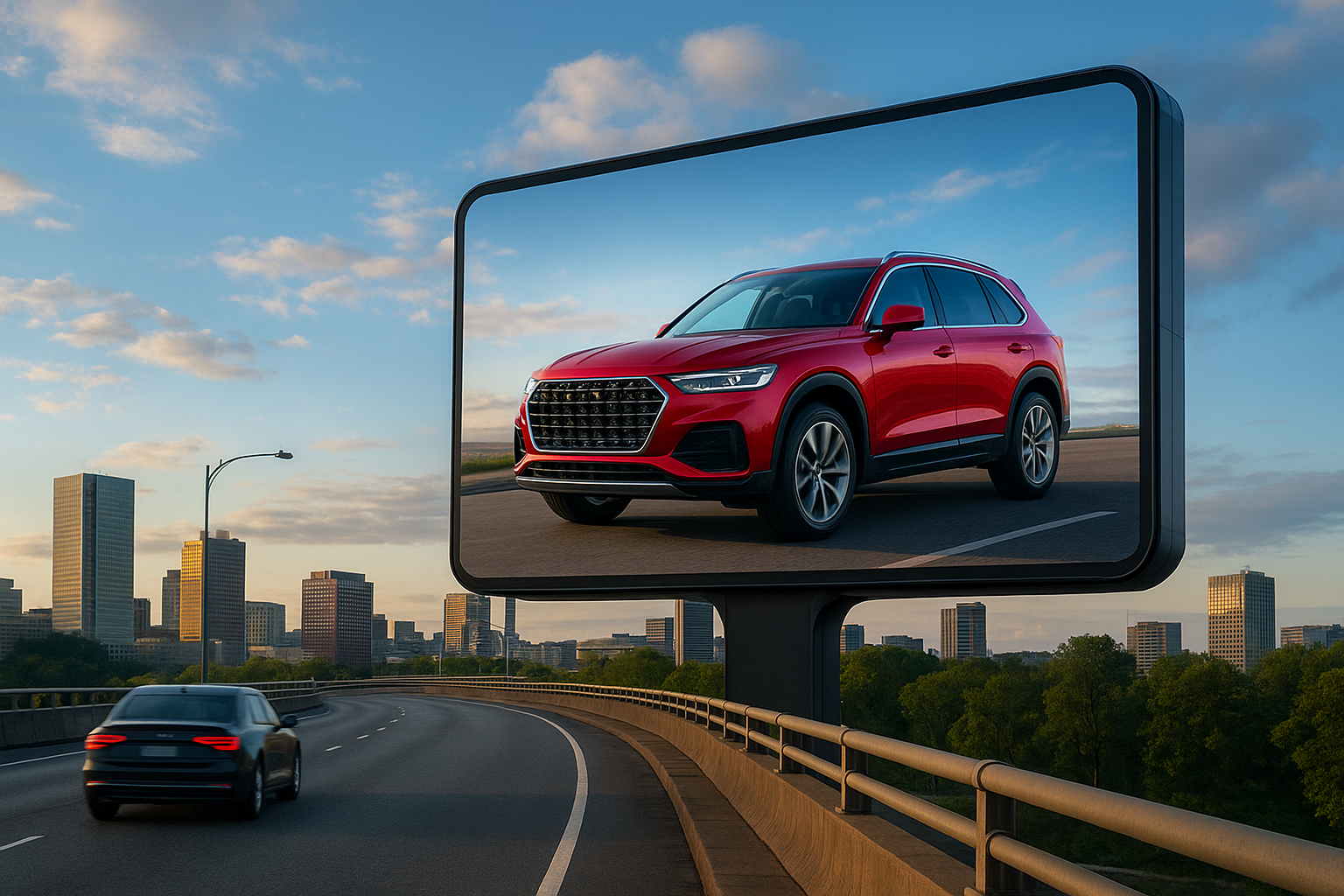Digital Out-of-Home (DOOH) advertising is transforming how automotive brands connect with potential buyers. By bringing dynamic, data-driven campaigns into high-traffic, real-world spaces—such as highways, shopping malls, and transit hubs—DOOH enables automotive marketers to reach audiences in moments when attention is at its peak.
The numbers speak for themselves: 76% of consumers have taken action after seeing a DOOH ad, whether that’s visiting a dealership, researching a vehicle online, or making a purchase decision. Automotive brands that adopt these strategies now will gain a competitive edge in visibility, customer engagement, and measurable ROI.
Key Benefits of DOOH for Automotive Marketing
-
- 1. Visibility in High-Traffic Locations
Automotive is a purchase that’s often influenced by exposure and familiarity. DOOH placements near highways, malls, or transit stations ensure maximum visibility. According to PwC, 70% of consumers notice digital billboards on their commute, making them a natural fit for car brands seeking reach.
- 2. Dynamic and Interactive Content
Unlike static billboards, DOOH allows content to be updated in real-time. A dealership could promote a “Weekend Sales Event” on Friday afternoon, then switch the ad Monday morning to spotlight financing offers. Campaigns can even adapt to weather—think SUVs promoted during snowstorms or convertibles during sunny days.
- 3. Targeted Messaging and Real-Time Adjustments
Modern DOOH platforms integrate with mobile and location data. That means you can target affluent neighborhoods with luxury car ads, or suburban malls with family-friendly SUV campaigns.
- 4. Enhanced Engagement
Interactive DOOH—like touchscreens or QR-enabled billboards—bridges the offline-online gap. For example, a digital screen could allow passersby to explore a 360° view of the latest model, book a test drive, or unlock an exclusive incentive via their smartphone.
How Automotive Brands Can Use DOOH
- 1. Digital Billboards
Nielsen research shows that 75% of travelers recalled seeing a digital billboard in the past month, and 60% noticed one in the past week, with high overall engagement rates. Use these eye-catching boards on highways or busy intersections to promote your latest car models, seasonal offers, or national campaigns.
- 2. Transit Advertising
Capture the attention of commuters with targeted ads at bus stops, subways, or airports. Since commuters spend an average of 1–2 hours daily in transit, DOOH becomes a cost-effective way to engage audiences in “dwell time” environments.
- 3. Interactive Kiosks
Let potential customers book a test drive, explore car features, or compare financing options directly at the kiosk. This self-directed experience bridges online and offline shopping, giving buyers convenient, real-time access to vehicle details and dealership services.
- 4. Retail Store Displays
In automotive accessory shops or tire centers, digital screens can reinforce upsell opportunities by showcasing maintenance packages, tire deals, or vehicle upgrades in an engaging, video-led format.
Key Strategies for Optimizing DOOH Advertising
- 1. Targeting the Right Audience
Leverage geolocation and audience segmentation tools to align campaigns with high-intent buyers. For example, SUVs promoted near suburban shopping centers or EVs advertised in eco-conscious urban hubs.
- 2. Tailor Content to Your Environment
Adapt the tone and format: short, bold messages for roadside billboards; detailed, interactive content for airports or retail spaces where dwell time is longer.
- 3. Data-Driven Optimization
Utilizing DOOH analytics to measure impressions, dwell time, and engagement is crucial for understanding how audiences interact with your content in real time. These insights allow brands to optimize creative, adjust placements, and refine targeting, ensuring campaigns reach the right people at the right moments and ultimately drive stronger results.
- 4. Combine DOOH with Other Marketing Channels
DOOH campaigns are most effective when paired with mobile and social ads. For example, a consumer might see your SUV ad on a digital billboard and then receive a retargeted ad on Instagram inviting them to book a test drive, reinforcing your message across multiple channels.
Why DOOH Works for Automotive Brands
The automotive purchase journey is extensive and research-intensive, with buyers dedicating significant time to evaluating options before making a decision. Digital Out-of-Home (DOOH) advertising plays a pivotal role in keeping your brand top-of-mind during these critical stages. By offering repeated, contextual touchpoints, DOOH effectively nudges prospects closer to conversion, ensuring sustained brand presence throughout the buyer's decision-making process
Unlike TV or online ads, DOOH can’t be skipped, blocked, or scrolled past. With vivid, digital storytelling, it brings your brand into real-life environments where consumers are already making decisions about travel, mobility, and lifestyle.
Looking Ahead
As consumer habits shift toward digital-first engagement and as EV adoption rises, automotive brands need marketing strategies that are immersive, flexible, and measurable. DOOH provides the scale of traditional outdoor with the precision of digital—making it a powerful tool for driving dealership visits, boosting brand equity, and accelerating automotive sales.
Ready to harness DOOH for your automotive brand? Book a consultation with our digital marketing team today and start creating a campaign that drives real-world impact.
.jpg)
.jpg)



